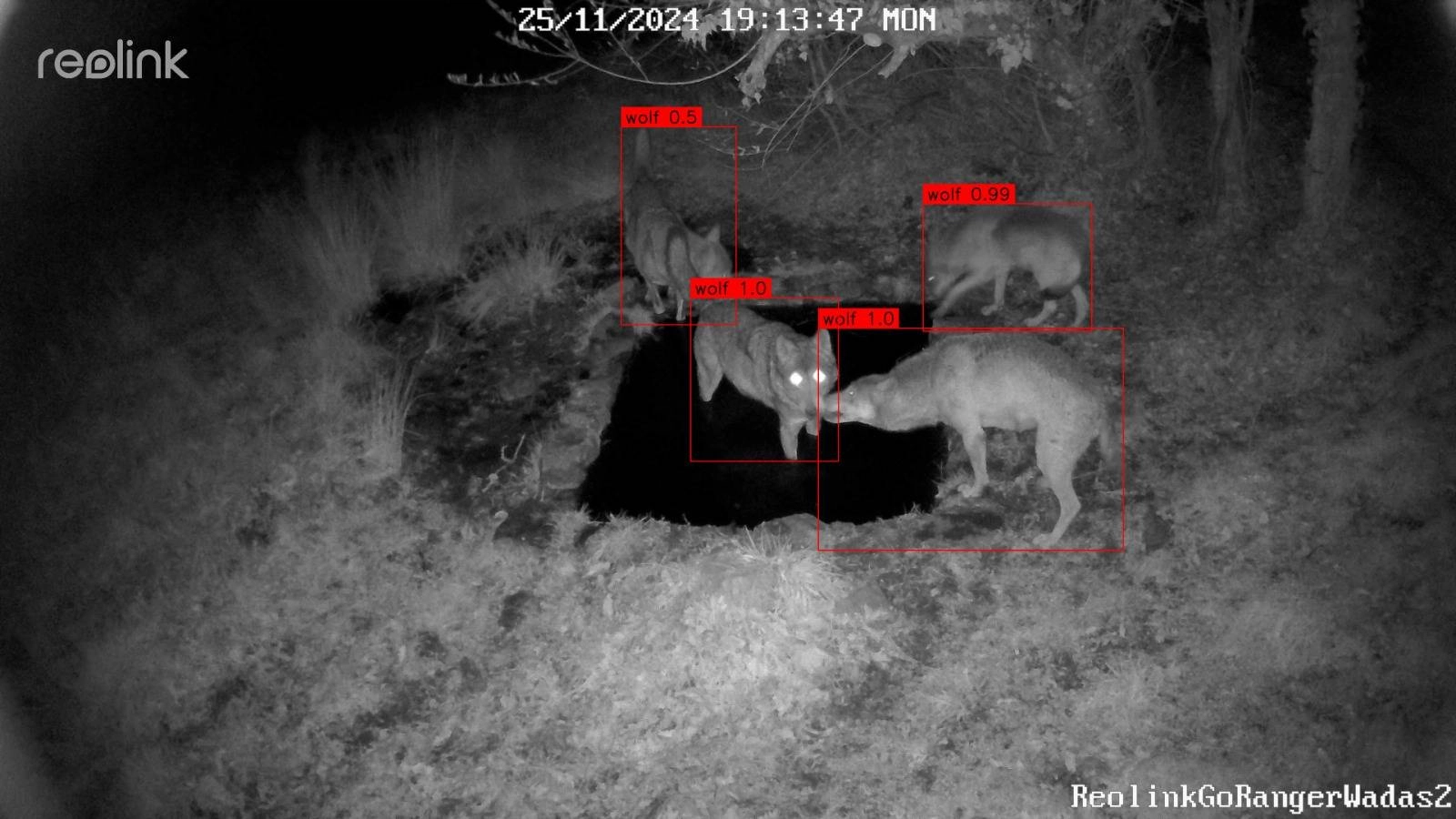In the picturesque setting of Villetta Barrea, one of the villages located in the heart of the Abruzzo Lazio and Molise National Park (PNALM), a press conference was held today morning to present the WADAS application, an acronym for Wild Animal Detection and Alert System (“Wildlife Detection and Alert System”).
The project, strongly desired and supported by Salviamo l’Orso, was carried out in collaboration with PNALM and the University of L’Aquila, with the technical support of leading multinational innovation companies such as Intel and Reolink, and aims to create a software application, based on an artificial intelligence engine, that allows the identification of wild animals in dangerous situations and the monitoring of their movements on the territory, inside and outside protected areas, so as to facilitate coexistence between wildlife and local communities.
As explained to the journalists present in the room by Stefano Dell’Osa, Team Leader of the project, WADAS offers detection (detection) features that allow processing of images and videos captured by cameras deployed on the territory in which the presence of animals is found; once the detection has taken place, the application goes on to classify the animal according to species and, thanks to AI, allows sending operators a notification in real time, minimizing the risk of false positives.
Thus, thanks to WADAS, remote devices-such as road signs with light indicators and/or displays, feeders equipped with motorized opening/closing mechanisms-could be developed designed to counter accidents at roads and railways, and to avoid potential conflict episodes caused by animals that could potentially approach population centers or farms, driven by hunger and attracted by easily accessible food sources.
“The results of the first field tests conducted since the beginning of this year,” Dell’Osa explained, “show a 97.4 percent accuracy rate in wildlife detections and classifications, confirming the reliability of the open source solution, offered free of charge by the team of developers.
The protection of wild animals, especially protected or endangered species, in man-made areas of Italy’s territory is a complex issue that requires shared efforts to respond to the many challenges it poses. A goal that Salviamo L’Orso has always believed should be addressed through a multistakeholder approach, that is, through the involvement of all stakeholders who can be useful to the cause: in this case, the protection of that immense natural heritage constituted by the wildlife of the South Central Apennines and, if as it is hoped the application will be successful and used elsewhere, of the entire Planet especially where there is a high concentration of anthropized areas.
Also supporting the project, and the intelligent union of technology and conservation, is Stefano Orlandini, president of Salviamo L’Orso, who explained how “the project was born from the intuition and perseverance of one of our members-Stefano Dell’Osa-and is in line with the attention we have always paid to mitigating the risk of road investment of large wildlife. Quest’ultima è, infatti, una delle prime cause di mortalità per l’orso bruno marsicano, oltre che un pericolo costante per gli automobilisti, come dimostrato dai frequenti incidenti avvenuti negli ultimi anni e che coinvolgono svariate specie selvatiche”.
Luciano Sammarone, PNALM Director present in the room with journalists, added that “technology plays a crucial role in wildlife monitoring, offering advanced tools for biodiversity conservation and management. In fact, some technological tools make it possible to monitor species and habitats by reducing disturbance and providing valuable information for planning effective conservation strategies. The use of data analysis software and artificial intelligence allow large amounts of information to be processed quickly, identifying trends and threats that might go unnoticed by traditional methods.”
Other Information: Save the Bear | WADAS | Abruzzo Lazio e Molise National Park | University of L’Aquila | WADAS and Intel
> Download the press release in full.


